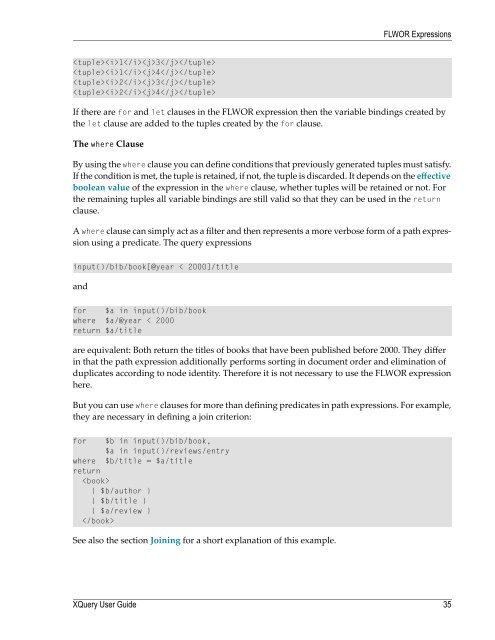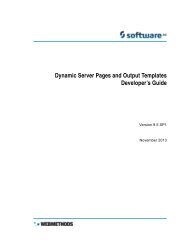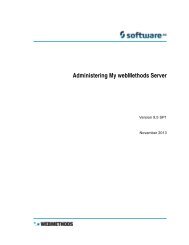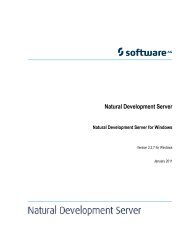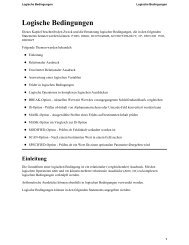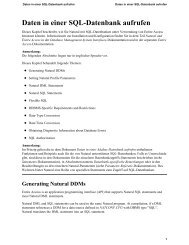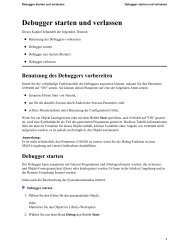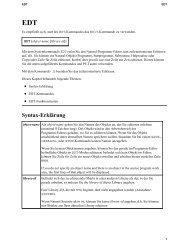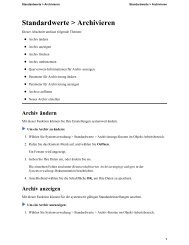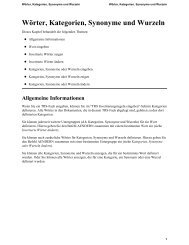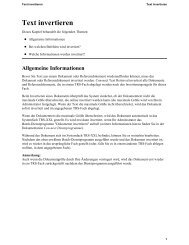Tamino XQuery User Guide - Software AG Documentation
Tamino XQuery User Guide - Software AG Documentation
Tamino XQuery User Guide - Software AG Documentation
Create successful ePaper yourself
Turn your PDF publications into a flip-book with our unique Google optimized e-Paper software.
FLWOR Expressions<br />
13<br />
14<br />
23<br />
24<br />
If there are for and let clauses in the FLWOR expression then the variable bindings created by<br />
the let clause are added to the tuples created by the for clause.<br />
The where Clause<br />
By using the where clause you can define conditions that previously generated tuples must satisfy.<br />
If the condition is met, the tuple is retained, if not, the tuple is discarded. It depends on the effective<br />
boolean value of the expression in the where clause, whether tuples will be retained or not. For<br />
the remaining tuples all variable bindings are still valid so that they can be used in the return<br />
clause.<br />
A where clause can simply act as a filter and then represents a more verbose form of a path expression<br />
using a predicate. The query expressions<br />
input()/bib/book[@year < 2000]/title<br />
and<br />
for $a in input()/bib/book<br />
where $a/@year < 2000<br />
return $a/title<br />
are equivalent: Both return the titles of books that have been published before 2000. They differ<br />
in that the path expression additionally performs sorting in document order and elimination of<br />
duplicates according to node identity. Therefore it is not necessary to use the FLWOR expression<br />
here.<br />
But you can use where clauses for more than defining predicates in path expressions. For example,<br />
they are necessary in defining a join criterion:<br />
for $b in input()/bib/book,<br />
$a in input()/reviews/entry<br />
where $b/title = $a/title<br />
return<br />
<br />
{ $b/author }<br />
{ $b/title }<br />
{ $a/review }<br />
<br />
See also the section Joining for a short explanation of this example.<br />
<strong>XQuery</strong> <strong>User</strong> <strong>Guide</strong><br />
35


